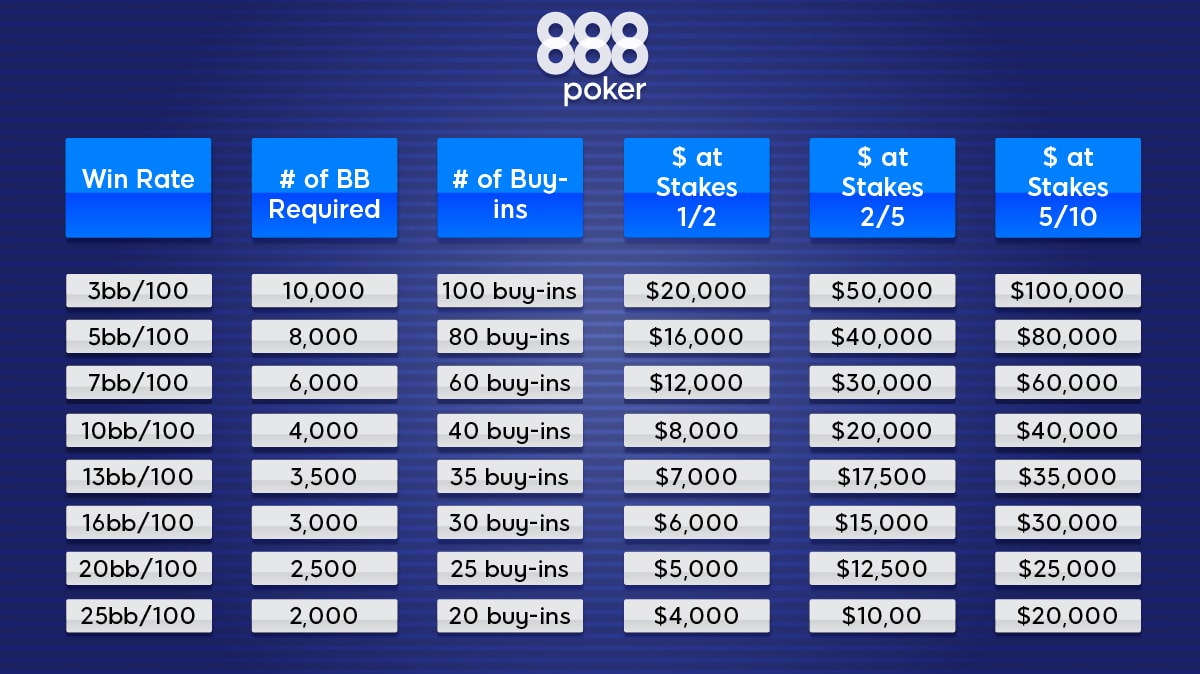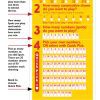Welcome, young poker enthusiasts! If you’re wondering, “How Do I Manage my Poker Bankroll?” you’ve come to the right place. Poker can be an exhilarating game, but it’s important to manage your bankroll wisely to ensure you stay in the game for the long haul. Let’s dive in and explore some tips and strategies to help you make the most of your poker funds.
Now, I know managing a poker bankroll might not sound like the most thrilling topic, but trust me, it’s crucial for your success on the felt. Think of your bankroll as your financial foundation in the poker world, the money you set aside specifically for playing poker. Just like building a sturdy house, you want to start with a solid base to weather any storms that may come your way.
So, whether you’re a beginner or have been playing for a while, learning how to manage your poker bankroll will give you a competitive edge and protect your funds. Stick around as we explore the ins and outs of bankroll management and discover strategies that will keep you in the game and on top of your poker game!
- Set a Budget: Determine the amount you are willing to spend on poker.
- Establish Limits: Set limits on how much you are willing to bet in each game or session.
- Track Your Expenses: Keep a record of your wins and losses to assess your performance.
- Practice Bankroll Management: Only use a small percentage of your bankroll per game to minimize risk.
- Review and Adjust: Regularly review your bankroll strategy and make adjustments as needed.

How Do I Manage my Poker Bankroll?
Welcome to the world of poker! If you’re new to the game or a seasoned player, one thing remains constant: managing your poker bankroll is crucial for long-term success. Whether you’re playing casually with friends or looking to make it big in professional poker tournaments, having a solid bankroll management strategy is key. In this article, we’ll explore the ins and outs of managing your poker bankroll, providing you with the knowledge and tools to maximize your winnings and minimize your losses.
The Importance of Bankroll Management
Before diving into the specifics of managing your poker bankroll, let’s first understand why it’s so important. Without proper bankroll management, even the most skilled players can quickly find themselves on a losing streak and potentially bust out. Properly managing your bankroll ensures that you have enough funds to withstand the natural variance of the game and avoid going broke. It also allows you to make better decisions regarding game selection, stakes, and the number of buy-ins you can comfortably afford. So, let’s dive into the seven key aspects of poker bankroll management.
1. Set a Bankroll Limit and Stick to It
The first step in managing your poker bankroll is setting a limit: the maximum amount of money you are willing to dedicate to your poker pursuits. This limit should be based on your financial situation and the level of risk you’re comfortable with. It’s essential to be realistic and not overextend yourself. Once you’ve set your bankroll limit, it’s crucial to stick to it, even in the face of tempting games or potential big wins. Discipline is the key to long-term success in poker.
When determining your bankroll limit, consider your other financial obligations, such as bills, rent, and savings. It’s important to have a separate dedicated poker bankroll that is independent of your daily expenses. This separation will help you maintain a clear and rational mindset when playing, rather than being influenced by the fear of losing money needed for essential expenses.
Remember, poker is a game of skill mixed with luck. Even the best players experience losing streaks. Having a dedicated poker bankroll will allow you to weather these downturns and continue playing at your best without the added pressure of financial stress.
2. Establish Proper Buy-In Guidelines
Now that you have your bankroll limit defined, the next step is determining how much of your bankroll you should risk in each individual poker game. This is where buy-in guidelines come into play. It is generally recommended to risk no more than 5% of your total bankroll in a single cash game or tournament buy-in. This conservative approach helps protect your bankroll from significant swings and ensures you have enough funds for future games.
For example, if your bankroll is $1,000, you should ideally limit your buy-ins to $50 or less. By adopting this guideline, you’ll have 20 or more buy-ins available, giving you ample room to handle the ups and downs of the game. It’s crucial to adjust your buy-in limits as your bankroll fluctuates. If you experience a winning streak and your bankroll grows, you can increase your buy-in limits within reason. Similarly, if you encounter a losing streak, it’s necessary to lower your buy-in limits to protect your bankroll.
By aligning your buy-ins with your bankroll and not risking too much on any single game, you ensure that you can withstand the natural variance of poker and continue playing without putting your entire bankroll at risk.
3. Choose the Right Games and Stakes
While it may be tempting to jump into the highest stakes games and compete against elite poker players, it’s essential to be realistic about your skill level and bankroll size. Choosing the right games and stakes is a critical aspect of bankroll management. Playing games and stakes that align with your bankroll and skill level greatly increases your chances of success and mitigates potential losses.
As a general rule, it’s recommended to have at least 20 buy-ins for the stakes you’re playing. This means that if you’re playing $1/$2 No-Limit Hold’em, you should have a bankroll of at least $4,000. Remember, this is the minimum requirement, and it’s often advised to have a more substantial bankroll to comfortably handle the variance of the game.
Additionally, take the time to assess your personal skill level. Be honest with yourself about your strengths and weaknesses as a player. If you’re still in the learning phase, it’s best to start with lower stakes games where the competition is less intense. Conversely, if you’re an experienced player with a strong track record, you may be more comfortable playing higher stakes. Always stay within your bankroll limits and be patient as you progress and improve your skills.
4. Track Your Results and Review Performance
Successful poker players treat the game as a business and meticulously track and review their results. Tracking your results allows you to have a clear understanding of your performance, identify trends, and make data-driven decisions. There are various poker tracking software available that can help you keep detailed records of your sessions, including your wins, losses, and other key statistics.
Reviewing your performance is equally important as tracking your results. By analyzing your play, you can identify areas for improvement, understand your strengths and weaknesses, and make necessary adjustments to your strategy. This self-reflection is an ongoing process that can lead to significant growth and better decision-making at the tables.
Remember, poker is a constantly evolving game, and staying on top of your performance through tracking and analysis is crucial for long-term success. Use the data to make informed decisions about your game selection, stakes, and overall strategy.
5. Manage Tilt and Emotions
Tilt, the state of mental or emotional frustration that affects decision-making, is the nemesis of many poker players. It can lead to impulsive actions, poor plays, and a rapid decline in your bankroll. Learning to manage tilt and emotions is a crucial aspect of successful bankroll management.
One way to combat tilt is by having a solid mental game. Develop strategies to keep yourself calm, focused, and in control at the poker table. This may include taking breaks, practicing mindfulness, or seeking professional help if needed. Recognize when you’re starting to tilt and take the necessary steps to prevent it from affecting your game and decision-making.
It’s also important to separate your emotions from the results of individual hands or sessions. In poker, winning and losing are part of the game. Even the best players experience bad beats and downswings. By maintaining emotional stability and not allowing temporary setbacks to dictate your play, you’ll be better equipped to navigate the ups and downs of the game and protect your bankroll.
6. Continuously Educate Yourself
Poker is a game of skill, and the best players are constantly learning and improving their strategies. Education and self-improvement should be an ongoing process to stay ahead of the competition and ensure long-term success.
There are numerous resources available to expand your poker knowledge, including books, online courses, forums, and training sites. Take advantage of these resources and invest time in studying and refining your skills. Learning from experienced players and experts can provide valuable insights, tips, and strategies that can help take your game to the next level.
By continuously educating yourself and staying up to date with the latest trends and strategies in poker, you’ll be able to make more informed decisions, adapt to changing game dynamics, and increase your chances of building a successful bankroll.
7. Practice Responsible Bankroll Growth
While the ultimate goal in poker is to grow your bankroll, it’s crucial to do so responsibly. Responsible bankroll growth involves consistently applying the principles of bankroll management, making informed decisions, and avoiding excessive risks.
As your bankroll grows, it can be tempting to move up in stakes and take shots at higher level games. However, it’s important to exercise caution and not jump into games where you may be outmatched or underprepared. Moving up in stakes should be done gradually and only after careful consideration of your skill level, bankroll size, and overall confidence.
Reinvestment of profits is another aspect of responsible bankroll growth. As you accumulate winnings, consider reinvesting a portion back into your bankroll to increase your capacity for higher stakes and larger potential rewards. However, avoid the urge to spend indiscriminately or overextend yourself financially.
By practicing responsible bankroll growth, you give yourself the best chance of long-term success in poker and minimize the risk of going broke due to poor decision-making or excessive risks.
Beyond Bankroll Management: Essential Tips for Poker Success
Banking on Success: Advanced Bankroll Management Strategies
Common Mistakes in Poker Bankroll Management and How to Avoid Them
#Extra Headings:
1. Pros and Cons of Bankroll Management Systems
2. Bankroll Management for Different Poker Variants
3. How to Recover from Bankroll Downswings
4. Bankroll Management vs. Patience: Striking the Right Balance
5. The Role of Luck in Poker Bankroll Management
6. Psychological Aspects of Bankroll Management
7. Bankroll Management Tips from the Pros
8. The Impact of Bankroll Management on Player Confidence
9. Tracking Software and Tools for Effective Bankroll Management
10. Why Bankroll Management Applies to Online Poker as well
11. Bankroll Management for Live Poker Tournaments
12. The Importance of Record-keeping in Bankroll Management
13. Bankroll Management for Casual Players
14. Bankroll Management for Professional Poker Players
15. Important Financial Considerations for Bankroll Management
16. Setting Realistic Goals for Bankroll Growth
17. Managing Your Poker Bankroll in the Age of Cryptocurrency
18. The Concept of “Stop-Loss” in Bankroll Management
19. Best Practices for Managing Bankroll Swings
20. Long-Term Strategies for Sustainable Bankroll Growth
Key Takeaways: How Do I Manage my Poker Bankroll?
- Set a budget for your poker bankroll and stick to it.
- Manage your risks by only playing with a small portion of your bankroll in each game.
- Keep track of your wins and losses to analyze your performance and adjust your strategy.
- Avoid chasing losses by knowing when to take a break and not playing emotionally.
- Consider using bankroll management tools or spreadsheets to help you track and manage your bankroll effectively.
Frequently Asked Questions
Managing your poker bankroll is crucial for long-term success. Here are some common questions on how to do it effectively.
1. What is the importance of managing my poker bankroll?
Managing your poker bankroll is vital because it helps you play within your financial means and reduces the risk of going broke. By allocating a specific amount of money for poker, you can ensure that you don’t overspend and can continue playing the game without financial stress.
Additionally, bankroll management allows you to handle the ups and downs of poker variance. By having enough money set aside for your poker sessions, you can weather losing streaks and avoid making impulsive decisions based on short-term results.
2. How much money should I allocate for my poker bankroll?
The amount of money you allocate for your poker bankroll depends on factors such as your skill level, playing style, and risk tolerance. A general rule of thumb is to have at least 20 to 30 buy-ins for the stakes you play. For example, if you primarily play $1/$2 no-limit hold’em, a bankroll of $4,000 to $6,000 would be suitable.
However, it’s essential to adjust your bankroll requirements based on your comfort level and the volatility of the games you play. If you’re a more conservative player or play in games with higher variance, you may want to have a larger bankroll to mitigate risk and ensure long-term sustainability.
3. Should I use a specific bankroll management strategy?
While there are various bankroll management strategies, it’s important to find one that aligns with your goals and playing style. The most common approach is the “10% rule,” where you allocate no more than 10% of your bankroll for a single game or tournament. This strategy helps prevent excessive losses and ensures you have enough funds to continue playing if you encounter a downswing.
However, it’s crucial to assess your risk tolerance and adjust your strategy accordingly. Some players may opt for a more conservative approach, allocating a smaller percentage, while others may be comfortable taking larger swings with a higher allocation. Ultimately, finding a strategy that suits your comfort level and long-term goals is paramount.
4. How can I track and monitor my poker bankroll?
Keeping track of your poker bankroll is essential for effective management. There are various tools and methods you can use, such as spreadsheet software or dedicated bankroll management apps. These tools allow you to record your wins, losses, and ongoing expenses, providing a clear picture of your poker finances.
Regularly reviewing your bankroll data enables you to identify trends, analyze your performance, and make informed decisions regarding your poker play. By tracking your results and assessing your bankroll regularly, you can spot potential leaks in your game, identify areas for improvement, and adjust your bankroll management strategy if necessary.
5. Are there any common mistakes to avoid when managing my poker bankroll?
Yes, there are a few common mistakes to avoid when managing your poker bankroll. One common error is not playing within your bankroll limits. If you consistently play above your bankroll, you run the risk of experiencing significant losses that could impact your long-term poker journey.
Another mistake is failing to separate your poker bankroll from personal finances. Mixing the two can lead to poor financial decisions and potential problems in your personal life. Lastly, neglecting to track and review your bankroll regularly can prevent you from identifying and addressing issues proactively.
How to Manage Your Bankroll Like a Pro | Bankroll Management: Cash game vs Tournaments
Summary:
Managing your poker bankroll is important to play responsibly and have fun.
To do this, set a budget and stick to it, only playing with what you can afford to lose. Keep track of your wins and losses and adjust your bets accordingly. It’s also helpful to play at the right stakes level for your bankroll size. Avoid making impulsive decisions or chasing losses. Remember, the goal is to enjoy the game while protecting your money.









